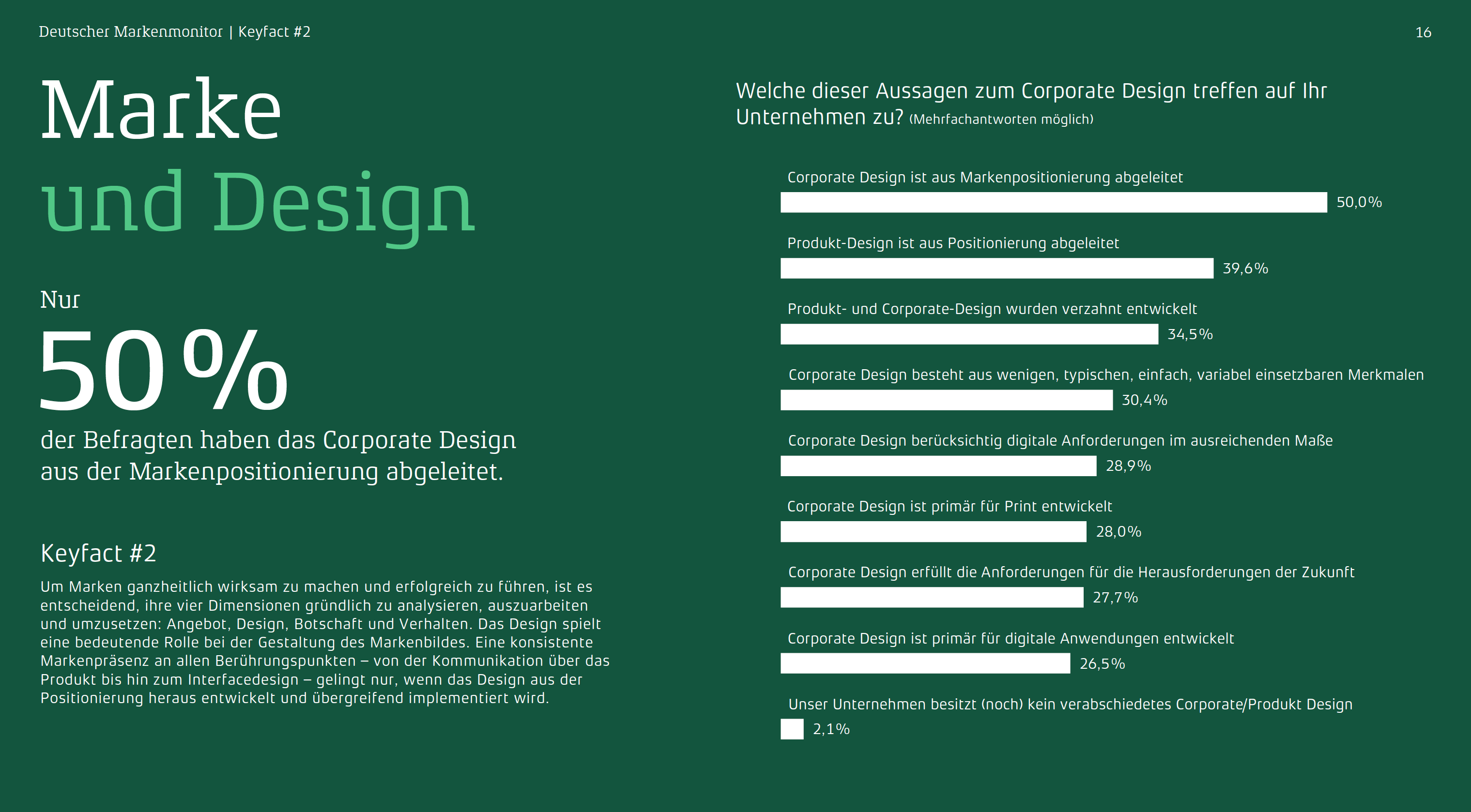What is the current state of brand management? What trends can be identified? And what challenges do companies have to face? The German Brand Monitor 2023/2024 provides answers.
By Thomas Wagner
What promises success? Markets are becoming more complex, the climate crisis and digitization are increasing the pressure to change – and the trust of customers has to be fought hard anyway. A company’s identity, its attractiveness, its working atmosphere and its ethical principles – in a dynamic economic and social environment, brands are becoming increasingly important as points of orientation. A strong brand can serve as a compass for the sustainable development of a company and as a reliable partner for its customers. It is obvious that brands are much more than highly visible labels or product names. What is less clear to many is that brands (and their stability) do not fall from the sky but, if they are to remain successful, must be well managed, constantly developed and transformed.
How the importance of brand management is developing in the face of advancing digitization and changing consumer needs is presented in bundled form by the German Brand Monitor 2023/2024. The “relevant decision-maker study on brand management” is being published for the 6th time. It is compiled and published by the German Design Council, gmk Markenberatung and the German Brand Institute. The current study is based on an online survey of 336 executives and brand managers of German and international companies from various industries in the DACH region conducted in March and April 2023.

Success Factors of Today’s Brand Management
The results of the survey are summarized clearly and comprehensibly in a total of eight “key facts”:
- Many people are aware that good brand management is important: Around 82% of respondents believe that brand management in their own company is “highly or very highly important” and assume that the right brand management has a “major influence on the success of the brand and the competitiveness of the company” in the long term. (Only just under 4% of respondents recognize a low importance or very low importance of brand management in their company).
- To “make brands holistically effective and successfully managed, it is critical to thoroughly analyze, elaborate and implement their four dimensions: Offer, Design, Message and Behavior.” Design plays an important role in creating the brand image. Only if the design is developed from the positioning and implemented across the board can a consistent brand presence be achieved at all touchpoints – from communication to product to interface design.
- For many brands, the design of the “digital customer journey” represents a major challenge, since “a content strategy that is both aligned with the brand and easy to implement” is essential “in order to meet the complex requirements in the digital space.
- The brand must first be understood from the inside and – keyword “internal branding” – consistently embodied by the employees.
- Brand controlling” should also be used to identify problem areas and support brand management in a rational manner.
- According to Markenmonitor, creating consistent brand experiences is a particular challenge in brand management. According to the respondents, this is due to the fact that “countless digital touchpoints meet limited resources and guidelines”, “making holistic implementation almost impossible”.

Trends in Brand Management
It’s clear: Brand management is anything but a static affair.
- Accordingly, it must be decided “whether and how brand management can use current trends to its advantage. More than 60% of the companies surveyed have already implemented sustainability in their brand strategy; more than 30% plan to do so. Brands also hope to leverage artificial intelligence (AI) for themselves, such as in “copywriting and design development, real-time optimization, and more.”
- Engaged employees represent a company’s asset of the future. As they become harder and harder to find, an “employer branding strategy” is becoming increasingly important to attract potential talent to the employer brand. Many companies do not yet make sufficient use of the potential here. Nevertheless, more than 80% find an employer branding strategy important or very important.
How Brand Management Can Be Improved
The study derives the following recommendations for action from the “key facts”:
- Awareness and knowledge of the brand must be built up, especially at management level.
- The brand must be implemented in everyday operations. This means: “The brand promise must be delivered by all employees of a company – at all touchpoints.”
- Branding should be managed along the experience chain and not limited to the areas of customer experience influenced by marketing and communications (keyword: brand as an “integrative discipline.”).
- Since a brand develops its impact from the inside out, employees must not only be trained in what the brand positioning means for their own everyday work, but also be inspired in the long term.
- In the competition for talent, a strong employer brand derived from the brand positioning should be developed.
- The brand must be completely digitally conceived,
- brand management should be involved in innovations (up to and including new business models).
- Last but not least, difference counts: companies should therefore pay attention (possibly even more than before) to differentiating themselves from the competition through “differentiating brand moments along the entire customer experience”. Since brand-defining design can easily be copied in digital worlds of experience, brands “need to protect themselves here more than they realize.” This is made possible by “trademark law reform and the possibility of registering digital brand forms such as the multimedia brand” in digital environments, the study authors note: “Intellectual property is an important tool for securing value creation.”
More on ndion
More Articles on the topic of brands.
Share this page on Social Media:

